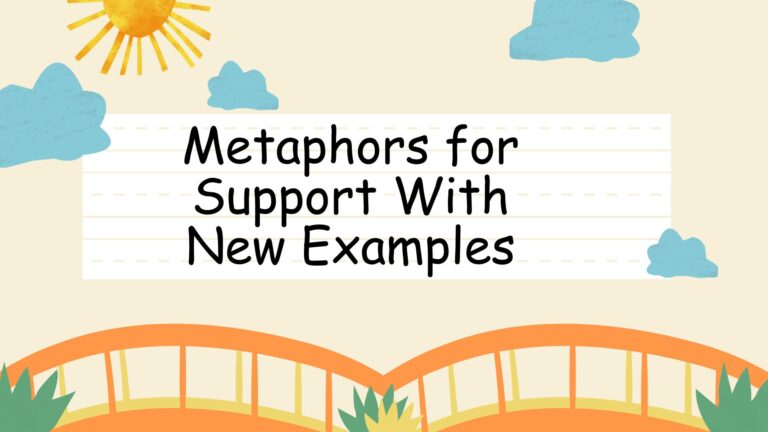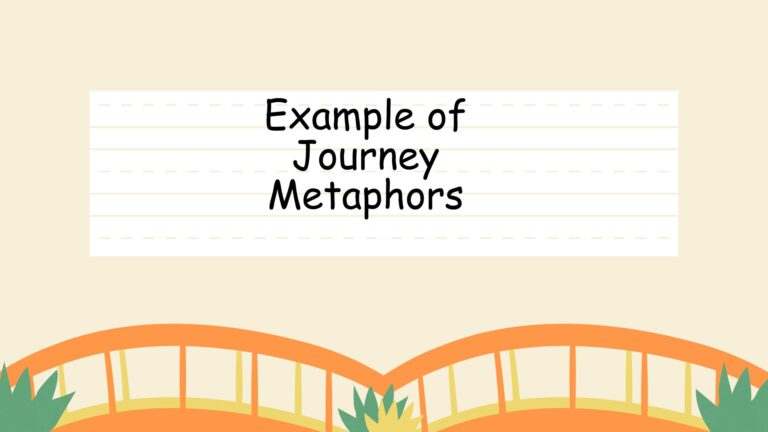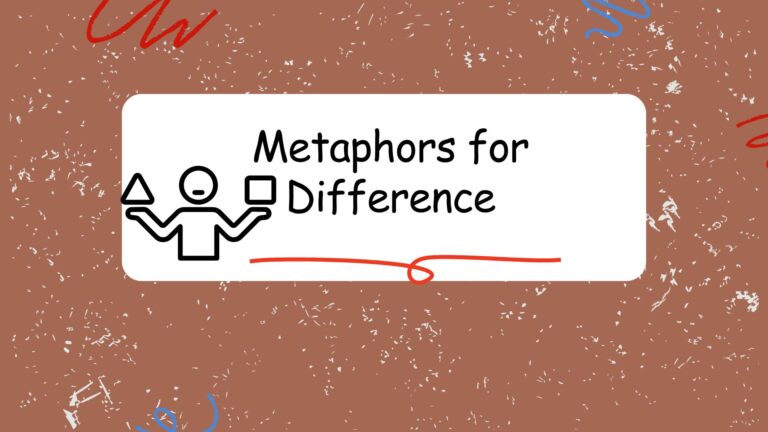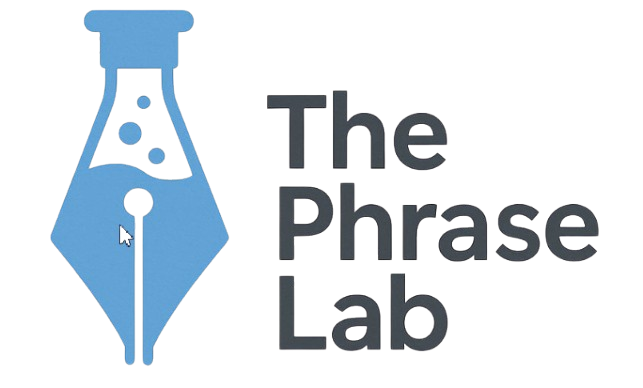
70+ Best Metaphors About Art
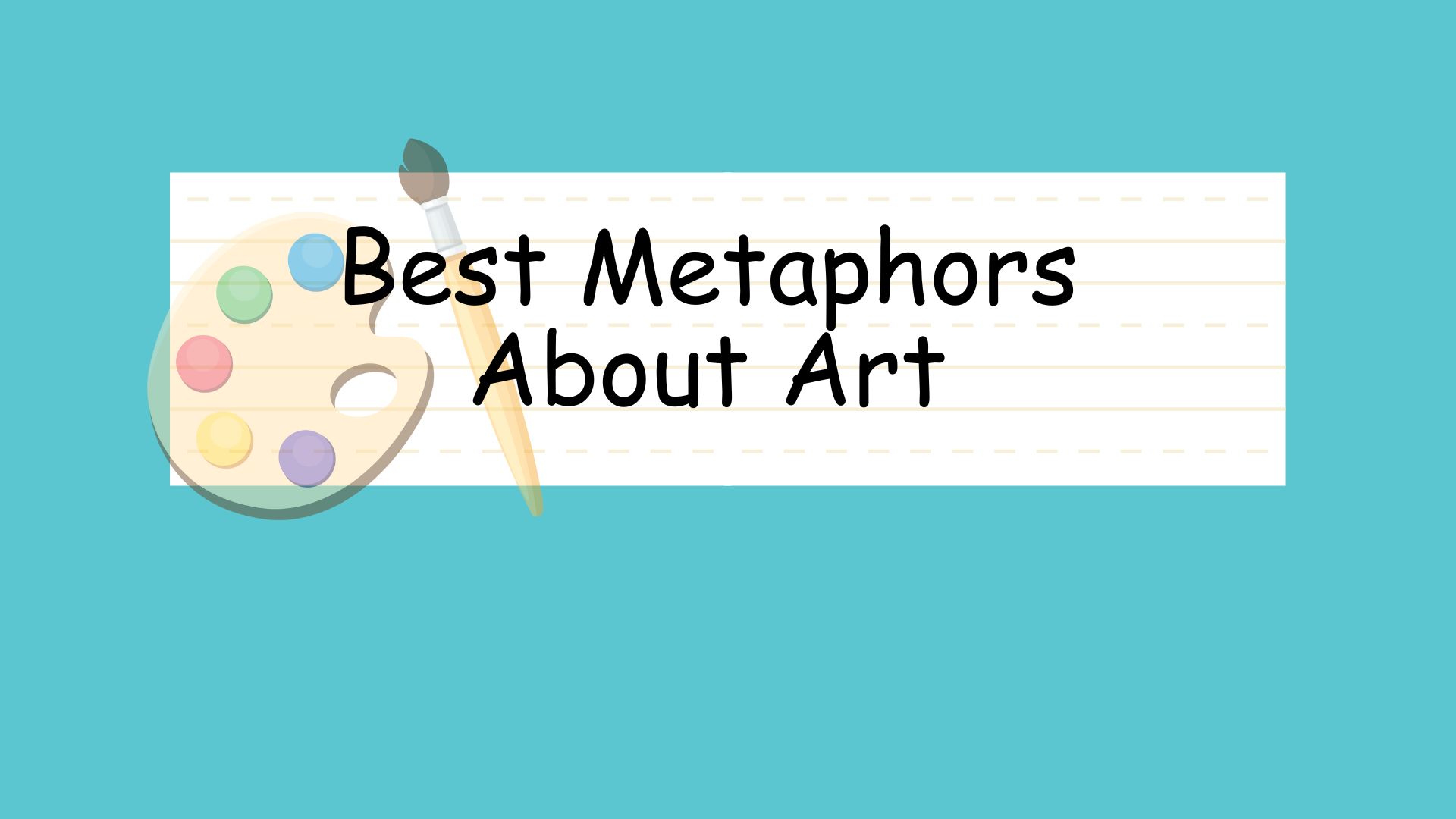
Metaphors are powerful tools that enrich our language, allowing us to express abstract ideas and complex emotions in vivid and relatable ways. When applied to art, metaphors offer a unique lens through which we can understand and appreciate creative expression. This article delves into the world of metaphors about art, exploring their definition, structure, types, usage, and common pitfalls. Whether you’re an art student, a writer, or simply someone who enjoys exploring the nuances of language, this guide will equip you with the knowledge and skills to effectively use and interpret metaphors in the context of art.
Understanding these metaphors not only enhances your appreciation of art itself but also improves your overall command of the English language. By exploring the various ways we use figurative language to describe and interpret art, you’ll gain a deeper understanding of both the art world and the art of communication itself.
Table of Contents
- Introduction
- Definition of Metaphors About Art
- Structural Breakdown
- Types and Categories of Art Metaphors
- Examples of Metaphors About Art
- Usage Rules
- Common Mistakes
- Practice Exercises
- Advanced Topics
- FAQ
- Conclusion
Definition of Metaphors About Art
A metaphor is a figure of speech that directly compares two seemingly unrelated things, asserting that one is the other. Unlike similes, which use “like” or “as” to make comparisons, metaphors create a more implicit and impactful connection. In the context of art, metaphors are used to describe, interpret, and analyze artworks by drawing parallels between them and other concepts, objects, or experiences. These metaphors can relate to the visual aspects of the art, the emotions it evokes, the time period it represents, or even abstract ideas it embodies.
Metaphors about art serve several crucial functions. Firstly, they provide a more accessible way to understand complex or abstract artworks. By relating the art to something familiar, metaphors bridge the gap between the artwork and the audience’s understanding. Secondly, they add depth and richness to art criticism and analysis, allowing for more nuanced and insightful interpretations. Finally, they enhance the descriptive power of language, enabling writers and speakers to convey the essence of an artwork in a more evocative and memorable way.
Structural Breakdown
The structure of a metaphor consists of two main elements: the tenor and the vehicle. The tenor is the subject being described (in this case, the artwork or an aspect of it), and the vehicle is the object or concept to which the tenor is being compared. The effectiveness of a metaphor lies in the connection between the tenor and the vehicle, and how well the vehicle illuminates the tenor.
Consider the metaphor “This painting is a symphony of colors.” Here, the tenor is the painting, and the vehicle is a symphony. The metaphor suggests that the painting, like a symphony, is composed of a harmonious arrangement of different elements (in this case, colors) that work together to create a unified and pleasing whole. The shared characteristics between a painting and a symphony – harmony, composition, emotional impact – make the metaphor effective.
To create compelling metaphors about art, it’s important to consider the following elements:
- Relevance: The vehicle should be relevant to the tenor, sharing meaningful characteristics that enhance understanding.
- Originality: While some common metaphors exist, striving for originality can make your descriptions more impactful and memorable.
- Clarity: The metaphor should be clear and easily understood, avoiding overly obscure or convoluted comparisons.
- Context: The context in which the metaphor is used can significantly affect its interpretation. Consider the audience and the overall message you are trying to convey.
Types and Categories of Art Metaphors
Metaphors about art can be categorized based on the aspect of the artwork they emphasize or the type of comparison they make. Here are some common categories:
Visual Metaphors
These metaphors focus on the visual elements of the artwork, such as color, shape, composition, and texture. They often compare the artwork to natural phenomena, objects, or other visual experiences.
Emotional Metaphors
These metaphors describe the emotional impact of the artwork, comparing it to feelings, moods, or emotional states. They aim to convey the emotional resonance of the art to the audience.
Temporal Metaphors
These metaphors relate the artwork to time, history, or specific moments in the past. They can evoke a sense of nostalgia, historical context, or the passage of time.
Sensory Metaphors
These metaphors use sensory language to describe the artwork, appealing to the senses of sight, sound, touch, taste, and smell. They can create a more immersive and vivid experience for the audience.
Abstract Metaphors
These metaphors compare the artwork to abstract concepts, ideas, or philosophical principles. They often explore the deeper meaning and significance of the art.
Examples of Metaphors About Art
Below are several tables providing examples of metaphors about art, categorized by type. Each example aims to illustrate how metaphors can be used to describe different aspects of art, from its visual elements to its emotional impact.
Table 1: Visual Metaphors
This table presents examples of visual metaphors used to describe various aspects of art, focusing on color, shape, composition, and texture. These metaphors help to paint a vivid picture of the artwork’s visual characteristics.
| Metaphor | Explanation |
|---|---|
| The painting is a sunrise of hope. | The colors are bright and optimistic, like a sunrise. |
| His brushstrokes are whispers of light. | The artist uses delicate and subtle brushstrokes to create a sense of luminosity. |
| The sculpture is a frozen dance. | The sculpture captures a sense of movement and energy, as if it were a dance frozen in time. |
| The canvas is a battlefield of colors. | The colors are vibrant and clashing, creating a sense of conflict and tension. |
| The mosaic is a garden of glass. | The mosaic is made up of many small pieces of colored glass, arranged to create a beautiful and intricate design. |
| The photograph is a window into the past. | The photograph captures a moment in time, offering a glimpse into the past. |
| The mural is a story etched in paint. | The mural tells a story through its images and symbols. |
| The sculpture’s texture is a landscape of ridges and valleys. | The sculpture’s surface is uneven and textured, resembling a miniature landscape. |
| The composition is a carefully orchestrated ballet of shapes. | The shapes are arranged in a harmonious and balanced way, like dancers in a ballet. |
| The drawing is a skeleton of lines, supporting the form. | The lines create the basic structure of the drawing, like a skeleton supporting the body. |
| The artwork is a kaleidoscope of emotions. | The artwork evokes a wide range of emotions, like a kaleidoscope of colors and patterns. |
| The installation is a labyrinth of meaning. | The installation is complex and multi-layered, requiring careful exploration to understand its meaning. |
| The artist’s style is a fingerprint on the canvas. | The artist’s unique style is evident in every stroke and detail. |
| The painting’s surface is a mirror reflecting the artist’s soul. | The painting reveals the artist’s inner thoughts and feelings. |
| The artwork is a symphony of textures. | The artwork combines various textures to create a rich and engaging sensory experience. |
| The colors are a chorus of voices, each singing its own tune. | The colors work together to create a harmonious and vibrant composition. |
| The sculpture is a mountain of ambition, reaching for the sky. | The sculpture is grand and imposing, reflecting the artist’s ambition. |
| The painting is a garden of dreams, where anything is possible. | The painting is imaginative and surreal, inviting the viewer to escape into a world of dreams. |
| The photograph is a time capsule, preserving a moment for eternity. | The photograph captures a specific moment in time, preserving it for future generations. |
| The artwork is a dance of light and shadow. | The artwork uses light and shadow to create depth, contrast, and drama. |
| The brushstrokes are a river flowing across the canvas. | The brushstrokes create a sense of movement and fluidity. |
| The sculpture is a silent scream, expressing raw emotion. | The sculpture conveys a powerful and intense emotion without uttering a word. |
| The colors are a language spoken without words. | The colors communicate emotions and ideas directly to the viewer. |
| The artwork is a window to another world. | The artwork transports the viewer to a different place or time. |
| The lines are a roadmap guiding the viewer’s eye. | The lines direct the viewer’s attention and create a sense of order. |
| The shapes are building blocks constructing a new reality. | The shapes combine to create a unique and imaginative composition. |

Table 2: Emotional Metaphors
This table showcases emotional metaphors used to describe the feelings and moods evoked by different artworks. These metaphors help viewers connect with the art on a deeper, more personal level.
| Metaphor | Explanation |
|---|---|
| The music is a river of sorrow. | The music evokes feelings of sadness and grief. |
| The painting is a portrait of loneliness. | The painting conveys a sense of isolation and solitude. |
| The sculpture is a monument to resilience. | The sculpture embodies strength and perseverance in the face of adversity. |
| The poem is a whisper of hope in the darkness. | The poem offers a glimmer of optimism in a bleak situation. |
| The dance is an explosion of joy. | The dance expresses pure happiness and exhilaration. |
| The film is a mirror reflecting our fears. | The film explores and confronts our deepest anxieties. |
| The novel is a journey through grief. | The novel tells a story of loss and mourning. |
| The play is a battlefield of emotions. | The play portrays intense emotional conflict and turmoil. |
| The artwork is a sanctuary of peace. | The artwork provides a sense of calm and tranquility. |
| The song is a lullaby for the soul. | The song soothes and comforts the listener. |
| The painting is a scream of rage. | The painting expresses intense anger and frustration. |
| The sculpture is a hug of reassurance. | The sculpture provides a sense of comfort and support. |
| The poem is a love letter to life. | The poem expresses a deep appreciation for the beauty and wonder of life. |
| The dance is a celebration of freedom. | The dance expresses liberation and independence. |
| The film is a nightmare of reality. | The film presents a disturbing and unsettling view of the world. |
| The novel is a symphony of emotions. | The novel evokes a wide range of feelings in the reader. |
| The play is a rollercoaster of suspense. | The play keeps the audience on the edge of their seats with its twists and turns. |
| The artwork is a garden of serenity. | The artwork creates a peaceful and calming atmosphere. |
| The song is a balm for a wounded heart. | The song provides comfort and healing to those who are hurting. |
| The painting is a window into the artist’s soul. | The painting reveals the artist’s inner thoughts and feelings. |
| The sculpture is a testament to human strength. | The sculpture embodies the resilience and fortitude of the human spirit. |
| The poem is a beacon of hope in a world of despair. | The poem offers a message of optimism and encouragement in difficult times. |
| The dance is a whirlwind of passion. | The dance expresses intense emotions and energy. |
| The film is a journey into the depths of the human psyche. | The film explores the complexities and mysteries of the human mind. |
| The novel is a tapestry of human experience. | The novel weaves together various stories and perspectives to create a rich and complex narrative. |
Table 3: Temporal Metaphors
This table illustrates temporal metaphors, which connect art to specific time periods, historical events, or the concept of time itself. These metaphors help to contextualize the artwork and provide a sense of historical perspective.
| Metaphor | Explanation |
|---|---|
| The painting is an echo of the Renaissance. | The painting reflects the artistic style and values of the Renaissance period. |
| The sculpture is a relic of ancient times. | The sculpture is reminiscent of ancient art and culture. |
| The music is a time capsule from the 1960s. | The music captures the sound and spirit of the 1960s. |
| The photograph is a snapshot of history. | The photograph captures a moment in time that is historically significant. |
| The artwork is a bridge between past and present. | The artwork connects the traditions of the past with the innovations of the present. |
| The building is a monument to a bygone era. | The building represents the architecture and values of a past time. |
| The play is a mirror reflecting the anxieties of the 20th century. | The play explores the fears and uncertainties of the 20th century. |
| The novel is a chronicle of a changing world. | The novel documents the social, political, and economic changes of a particular period. |
| The film is a window into the future. | The film explores the possibilities and challenges of the future. |
| The artwork is a dialogue with the ages. | The artwork engages in a conversation with the art and ideas of previous generations. |
| The dance is a ritual passed down through generations. | The dance represents a tradition that has been preserved and transmitted over time. |
| The poem is a voice from the past, speaking to the present. | The poem offers insights and wisdom from a previous era. |
| The sculpture is a guardian of ancient secrets. | The sculpture protects and preserves the knowledge of the past. |
| The painting is a portal to another time. | The painting transports the viewer to a different historical period. |
| The music is a soundtrack to history. | The music accompanies and enhances our understanding of historical events. |
| The photograph is a memento of a lost world. | The photograph captures a glimpse of a world that no longer exists. |
| The artwork is a conversation between generations. | The artwork facilitates a dialogue between different time periods and perspectives. |
| The building is a landmark that has witnessed centuries of change. | The building has stood the test of time and has observed many historical events. |
| The play is a reflection of the social norms of its time. | The play portrays the customs and values of a particular era. |
| The novel is a journey through the annals of history. | The novel explores the significant events and figures of the past. |
Table 4: Sensory Metaphors
This table offers sensory metaphors, which use language that appeals to the five senses to describe art. These metaphors can create a more immersive and engaging experience for the audience by evoking vivid sensory impressions.
| Metaphor | Explanation |
|---|---|
| The music is a velvet touch on the ears. | The music is smooth and soothing, like the feeling of velvet. |
| The painting is a feast for the eyes. | The painting is visually rich and stimulating. |
| The sculpture is a cool, smooth stone in the hand. | The sculpture has a pleasant tactile quality. |
| The poem is a sweet taste on the tongue. | The poem is pleasing and satisfying to read. |
| The film is a cacophony of sounds and images. | The film is overwhelming and chaotic in its sensory input. |
| The artwork is a symphony of textures. | The artwork combines various textures to create a rich and engaging sensory experience. |
| The dance is a visual aroma, intoxicating the senses. | The dance is captivating and alluring, like a fragrant scent. |
| The novel is a journey that tantalizes the senses. | The novel provides a vivid and immersive sensory experience for the reader. |
| The play is a spectacle that assaults the senses. | The play is intense and overwhelming in its sensory impact. |
| The painting is a warm embrace on a cold day. | The painting evokes a sense of comfort and warmth. |
| The sculpture is a rough, grounding presence. | The sculpture has a tactile quality that provides a sense of stability and connection to the earth. |
| The poem is a gentle rain on parched earth. | The poem is refreshing and revitalizing. |
| The film is a rollercoaster of sights and sounds. | The film provides a thrilling and intense sensory experience. |
| The artwork is a banquet for the senses. | The artwork is rich and diverse in its sensory appeal. |
| The dance is a whirlwind of movement and color. | The dance is energetic and visually stimulating. |
| The novel is a feast of words. | The novel is rich and varied in its language and imagery. |
| The play is a sensory overload. | The play is overwhelming in its sensory impact. |
| The painting is a cool breeze on a summer day. | The painting is refreshing and calming. |
| The sculpture is a solid, reassuring presence. | The sculpture provides a sense of stability and security. |
| The poem is a soothing balm for the soul. | The poem provides comfort and healing. |
Table 5: Abstract Metaphors
This table presents abstract metaphors, which compare art to abstract concepts, ideas, or philosophical principles. These metaphors explore the deeper meaning and significance of the artwork and invite the audience to contemplate its underlying themes.
| Metaphor | Explanation |
|---|---|
| The painting is a meditation on mortality. | The painting explores themes of death and the transience of life. |
| The sculpture is an embodiment of freedom. | The sculpture represents the concept of freedom and liberation. |
| The music is a language of the soul. | The music expresses emotions and ideas that cannot be put into words. |
| The artwork is a quest for truth. | The artwork represents a search for meaning and understanding. |
| The building is a symbol of power. | The building represents authority and control. |
| The play is an exploration of human nature. | The play examines the complexities and contradictions of human behavior. |
| The novel is a journey through the landscape of the mind. | The novel explores the inner thoughts and feelings of its characters. |
| The film is a commentary on society. | The film offers a critical perspective on social issues and norms. |
| The dance is a celebration of life. | The dance expresses joy and appreciation for the gift of life. |
| The poem is a testament to the power of words. | The poem demonstrates the ability of language to express complex emotions and ideas. |
| The sculpture is a manifestation of inner strength. | The sculpture represents the resilience and fortitude of the human spirit. |
| The painting is a reflection of the artist’s inner world. | The painting reveals the artist’s thoughts, feelings, and experiences. |
| The music is a bridge between cultures. | The music connects people from different backgrounds and traditions. |
| The artwork is a dialogue with the universe. | The artwork explores the mysteries and wonders of the cosmos. |
| The building is a sanctuary for the soul. | The building provides a place of refuge and peace. |
| The play is a mirror reflecting the human condition. | The play explores the universal experiences of love, loss, joy, and suffering. |
| The novel is a journey through the labyrinth of human relationships. | The novel examines the complexities and challenges of interpersonal connections. |
| The film is a window into the human heart. | The film explores the emotions and motivations of its characters. |
| The dance is a celebration of the human body. | The dance expresses appreciation for the beauty and grace of the human form. |
| The poem is a song of the human spirit. | The poem celebrates the resilience and creativity of humanity. |
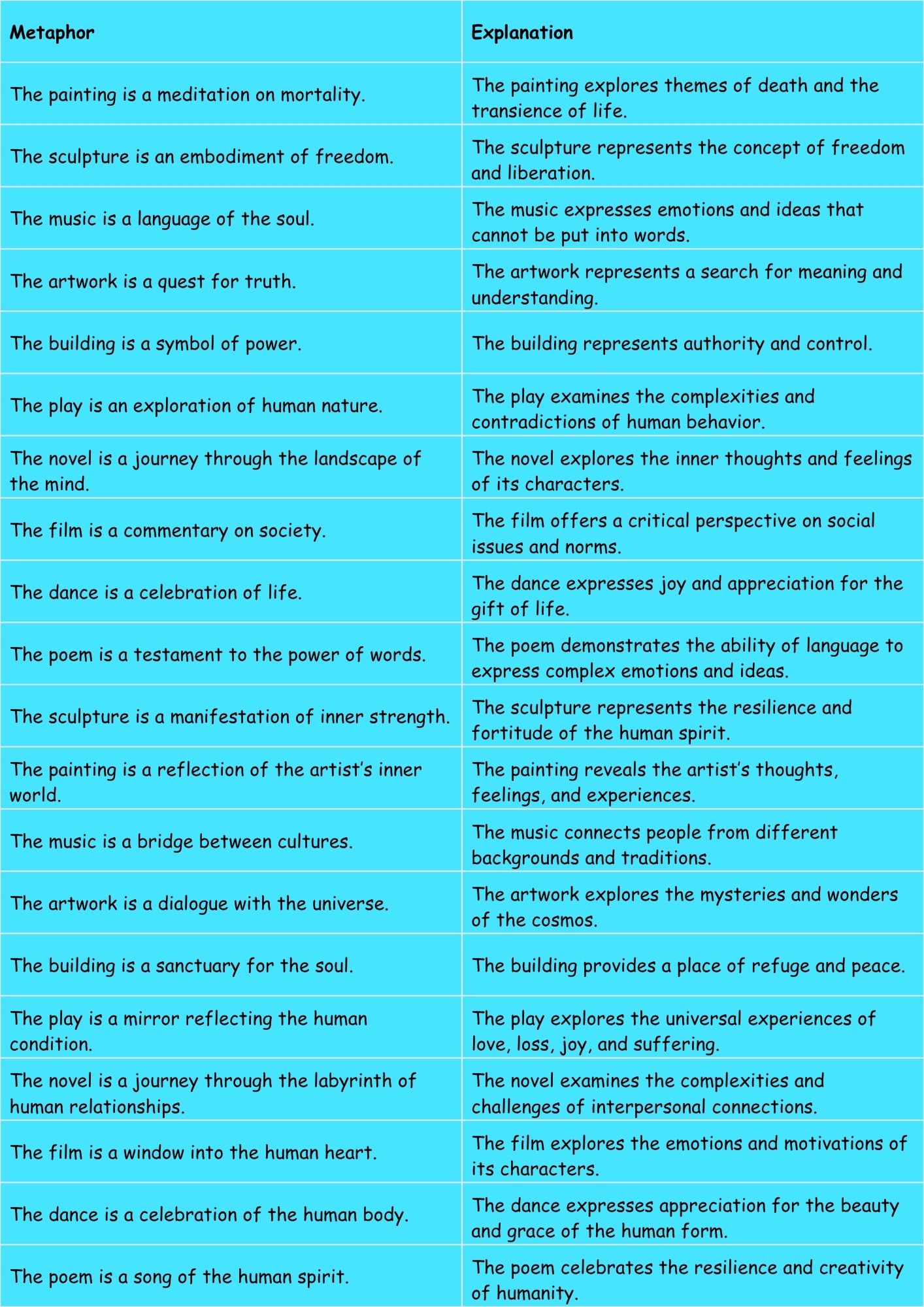
Usage Rules
While metaphors offer creative freedom, there are guidelines to ensure clarity and effectiveness:
- Avoid Mixed Metaphors: Combining incompatible metaphors can create confusion and undermine your message. For example, “The project is a rollercoaster heading for a brick wall” mixes the excitement of a rollercoaster with the destructive image of a brick wall, resulting in a nonsensical comparison.
- Ensure Relevance: The connection between the tenor and vehicle should be clear and meaningful. A metaphor that is too abstract or far-fetched may not resonate with the audience.
- Consider the Audience: Tailor your metaphors to your audience’s knowledge and understanding. A metaphor that works well for art experts may not be effective for a general audience.
- Use Sparingly: Overusing metaphors can make your writing or speech sound contrived and distracting. Use them judiciously to enhance your message, not to overwhelm it.
- Be Original: While some common metaphors are acceptable, striving for originality can make your descriptions more impactful and memorable. Avoid clichés and try to find fresh and creative comparisons.
Common Mistakes
Here’s a table illustrating common mistakes in using metaphors, alongside corrected examples:
| Incorrect | Correct | Explanation |
|---|---|---|
| The artist’s style was a roaring waterfall of subtlety. | The artist’s style was a gentle stream of subtlety. | “Roaring waterfall” contradicts “subtlety.” |
| The sculpture was a symphony of silence, loudly proclaiming its message. | The sculpture was a symphony of silence, quietly proclaiming its message. | “Loudly” clashes with “symphony of silence.” |
| The painting was a storm of tranquility. | The painting was an oasis of tranquility. | “Storm” is the opposite of “tranquility.” |
| The novel was a rollercoaster of boredom. | The novel was a slow, meandering river of boredom. | A rollercoaster suggests excitement, which contradicts “boredom.” |
| The play was a bright shadow of despair. | The play was a dark shadow of despair. | “Bright” is the opposite of “despair.” |
Practice Exercises
Test your understanding with these exercises:
Exercise 1: Identify the Metaphor
Identify the metaphor in each sentence and explain what two things are being compared.
| Question | Answer |
|---|---|
| 1. The dancer was a whirlwind of grace. | Metaphor: whirlwind of grace. Comparison: dancer and whirlwind. |
| 2. The music was a warm blanket on a cold night. | Metaphor: warm blanket. Comparison: music and blanket. |
| 3. The painting was a window to another world. | Metaphor: window. Comparison: painting and window. |
| 4. The poem was a delicate flower blooming in the desert. | Metaphor: delicate flower. Comparison: poem and flower. |
| 5. The sculpture was a silent scream frozen in stone. | Metaphor: silent scream. Comparison: sculpture and scream. |
| 6. The film was a mirror reflecting our deepest fears. | Metaphor: mirror. Comparison: film and mirror. |
| 7. The novel was a tapestry woven with threads of love and loss. | Metaphor: tapestry. Comparison: novel and tapestry. |
| 8. The play was a battlefield of conflicting emotions. | Metaphor: battlefield. Comparison: play and battlefield. |
| 9. The building was a fortress of solitude. | Metaphor: fortress. Comparison: building and fortress. |
| 10. The artwork was a symphony of colors and textures. | Metaphor: symphony. Comparison: artwork and symphony. |
Exercise 2: Complete the Metaphor
Complete each sentence by adding an appropriate metaphor.
| Question | Answer |
|---|---|
| 1. The artist’s creativity was a __________. | The artist’s creativity was a boundless ocean. |
| 2. The music’s melody was a __________. | The music’s melody was a gentle caress. |
| 3. The painting’s colors were a __________. | The painting’s colors were a vibrant rainbow. |
| 4. The poem’s words were __________. | The poem’s words were sparkling gems. |
| 5. The sculpture’s form was a __________. | The sculpture’s form was a powerful mountain. |
| 6. The film’s story was a __________. | The film’s story was a winding river. |
| 7. The novel’s characters were __________. | The novel’s characters were complex puzzles. |
| 8. The play’s dialogue was a __________. | The play’s dialogue was a sharp sword. |
| 9. The building’s architecture was a __________. | The building’s architecture was a grand symphony. |
| 10. The artwork’s overall impact was a __________. | The artwork’s overall impact was a profound revelation. |
Exercise 3: Correct the Mixed Metaphor
Identify and correct the mixed metaphor in each sentence.
| Question | Answer |
|---|---|
| 1. The project was a rollercoaster heading for a brick wall. | The project was a runaway train heading for disaster. |
| 2. Her voice was a velvet hammer, softly crushing my resistance. | Her voice was a velvet glove, gently persuading me. |
| 3. The idea was a seed that blossomed into a concrete jungle. | The idea was a seed that blossomed into a lush garden. |
| 4. The argument was a raging fire that slowly built to a boil. | The argument was a slow burn that eventually exploded. |
| 5. The plan was a house of cards floating on a sea of uncertainty. | The plan was a house of cards threatened by a storm of uncertainty. |
| 6. The artist’s vision was a beacon of light drowning in a sea of darkness. | The artist’s vision was a beacon of light piercing through the darkness. |
| 7. The performance was a symphony of chaos, carefully orchestrated to perfection. | The performance was a carefully orchestrated symphony of precision. |
| 8. The book was a rollercoaster of emotions that quietly whispered its secrets. | The book was a rollercoaster of emotions that loudly proclaimed its message. |
| 9. The sculpture was a frozen volcano, slowly erupting with passion. | The sculpture was a dormant volcano, about to erupt with passion. |
| 10. The film was a tapestry of dreams crashing into the harsh reality of life. | The film was a tapestry of dreams juxtaposed against the harsh reality of life. |
Advanced Topics
For advanced learners, consider exploring:
- Extended Metaphors: These are metaphors that are sustained throughout a longer passage, creating a more complex and nuanced comparison.
- Allegory: A story in which the characters and events represent abstract ideas or moral qualities. Allegories often rely heavily on metaphorical language.
- The Role of Metaphor in Art Theory: Explore how metaphors have shaped our understanding and interpretation of art throughout history.
- Cognitive Metaphor Theory: This theory explores how metaphors shape our thought processes and understanding of the world.
FAQ
Here are some frequently asked questions about metaphors about art:
- What is the difference between a metaphor and a simile?A metaphor directly equates two things (e.g., “The painting is a symphony”), while a simile uses “like” or “as” to make a comparison (e.g., “The painting is like a symphony”). Metaphors are generally considered more impactful and evocative.
- Why are metaphors useful in describing art?Metaphors provide a more accessible and engaging way to understand and appreciate art. They can convey complex ideas and emotions in a vivid and memorable way, bridging the gap between the artwork and the audience’s understanding.
- How can I improve my ability to create effective metaphors about art?Practice, observation, and a broad vocabulary are key. Study the works of writers and critics who use metaphors effectively, and pay attention to the details of the artwork you are describing. Explore different types of comparisons and experiment with language to find the most impactful way to convey
your message.
Conclusion
Metaphors are indispensable tools for articulating and appreciating art. By understanding the structural elements, types, and usage rules of art metaphors, you can significantly enhance your ability to describe, analyze, and interpret artworks. Embrace the power of figurative language to unlock new dimensions of artistic expression and deepen your connection with the world of art. Continue to practice, observe, and explore, and you’ll find that the world of art becomes richer and more meaningful through the lens of metaphor.

